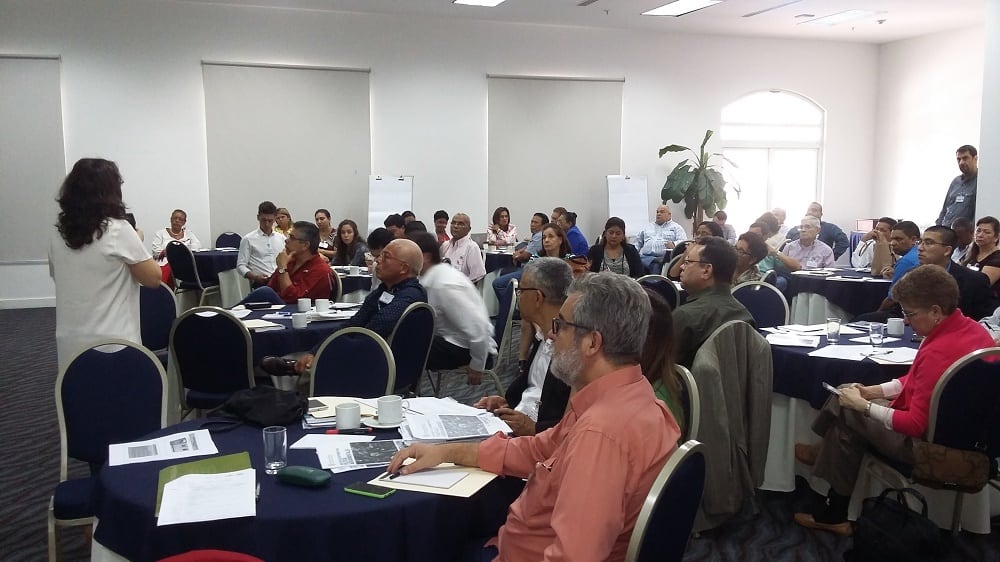The interdisciplinary and inter-sectoral national meetings form part of the Food and Agriculture Organization's (FAO) project: Strengthening Agro-environmental Policies in Latin America and the Caribbean Through Dialogue and Exchange of National Experiences, initially launched in 2012 in partnership with Brazil's Ministry of Environment. Meetings are being held this week in Mexico, Brazil and Cuba, in early June in Paraguay and Costa Rica and later on in Panama and Colombia.
Earlier project meetings and studies amongst the countries involved saw the establishment of Voluntary Guidelines for Agro-Environmental Policies in LAC, published in 2016, which are currently being taken up across the region. These latest meetings will finalize the definition of indicators to measure progress and impact of agro-environmental policies and programs under these guidelines.
Speaking to FoodNavigator-LATAM, FAO project coordinator Jessica Casaza said the overall goal was to strengthen agro-environmental policies as a tool for reducing rural poverty and food insecurity.
“The purpose of the indicators is to provide an instrument for monitoring and verifying changes and trends in key components of public and private management of policies with an agro-environmental approach,” Casaza said.
“...It's important not to confuse that we are not developing indicators to monitor food security or biodiversity, but selecting or defining a key policy indicator on that issue.”
Collaboration towards key objectives

Casaza said that, importantly as with all work under the project so far, there would be a wide range of representatives at the consultations, including government members from agriculture and environment ministries, members of the private sector, civil associations, research organizations and academia.
Interdisciplinary involvement, she said, was “essential” in addressing agro-environmental issues because they transversed different sectors, from the environment to production through to civilian life.
Identified objectives of the consultations and wider project, she said, were to: move towards sustainable production and consumption to guarantee food and nutrition security; sustainably manage natural resources; decrease the negative impacts on the climate; and improve governance and institutional management to better monitor and evaluate sectoral policies.
The Voluntary Guidelines provided part of this – giving guidance on how each country could improve policies in an integrated way – but she said the next step was to be able to measure progress and impact of agro-environmental policies and programs on a regional scale.
Official definition of 'agro-environmental policies' in the 2016 Voluntary Guidelines: “The definition of agro-environmental policy differs from common agricultural policy in that it incorporates a systemic and holistic approach and multiple goals, founded on the economic, socio-cultural and environmental dimensions of sustainability. Furthermore, it is not conceived of as a series of isolated measures, but rather as an articulated set of different strategic instruments for planning and governance adopted by governments. In this way, agro-environmental policies should be conceived of and established in order to reconcile the economic viability of food and tradable goods production with environmental conservation and the sustainable management of natural resources. Moreover, the main objective of these policies must continue to be overcoming rural poverty and ensuring food and nutrition security.”
A four dimensional focus
Casaza said that, to date under the project, 59 indicators had already been proposed - each falling under four components: environmental; social; economic and productive; and institutional and governance. These indicators also covered a variety of production systems, she said, including agricultural, livestock, forestry, fisheries and aquaculture.
“Key components are, for example regarding the environmental dimension: water, soils, biodiversity, atmosphere, waste and pollution. For each of these components, key indicators are being proposed and defined to monitor this issue in sectoral policies.”
Casaza said the goal of the current consultation rounds was to reduce the number of proposed indicators to establish a more focused way of monitoring trends and policy changes across Latin America.
Once finalized, though, she said the indicators would have to be considered holistically.
“The agri-environmental policy approach considered in the Voluntary Guidelines incorporates different dimensions of sustainability. Therefore, the evaluation of the pertinence and relevance of each indicator should not be taken in isolation, but should be considered as a whole to evaluate the agro-environmental progress in the policies.”
The FAO will publish the final set of indicators in the second half of this year.
